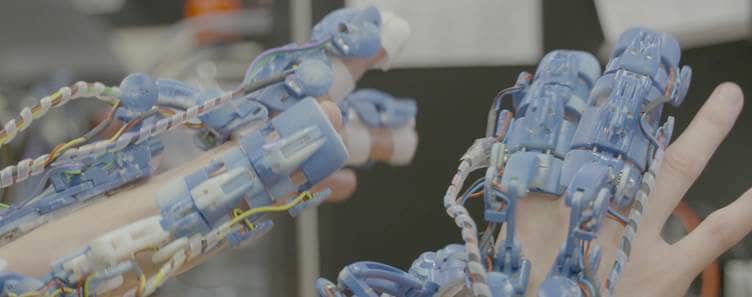Video of the week: wearable robotic system for keyhole surgery
Surgeons could soon operate on patients simply by moving their hands through the air, using a wearable robotic system for minimally invasive procedures.

The system, which is being developed by a team led by Prof. Sanja Dogramadzi at Bristol Robotics Laboratory and the University of West England (UWE Bristol), is based on a sensor-equipped exoskeleton that picks up the movement of the surgeon’s hands and fingers.
This information is then transmitted to flexible surgical instruments capable of mimicking this movement, while virtual reality glasses give the surgeon a three-dimensional view inside the patient.
Minimally invasive procedures offer a range of benefits to patients including reduced blood loss, fewer infections and faster recovery. Robot-assisted surgery has increased the number of procedures that can be performed minimally invasively, but until now the technology’s use has been limited by the rigid instruments associated with it, according to Dogramadzi.
The €4m research project, funded by the European Commission under the HORIZON 2020 scheme, will develop more flexible instruments, with greater levels of articulation, said Dogramadzi.
Register now to continue reading
Thanks for visiting The Engineer. You’ve now reached your monthly limit of news stories. Register for free to unlock unlimited access to all of our news coverage, as well as premium content including opinion, in-depth features and special reports.
Benefits of registering
-
In-depth insights and coverage of key emerging trends
-
Unrestricted access to special reports throughout the year
-
Daily technology news delivered straight to your inbox










Water Sector Talent Exodus Could Cripple The Sector
Well let´s do a little experiment. My last (10.4.25) half-yearly water/waste water bill from Severn Trent was £98.29. How much does not-for-profit Dŵr...